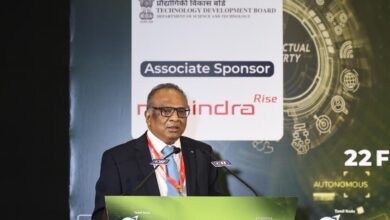Sikh body, Akali Dal at odds: SGPC chief’s resignation reveals how deep the divide is | Political Pulse News
The resignation of Shiromani Gurdwara Parbandhak Committee (SGPC) president Harjinder Singh Dhami has further exposed the tussle between the apex gurdwara management body and the Shiromani Akali Dal (SAD). The resignation came on Monday, days after the SGPC sacked Giani Harpreet Singh as the Jathedar of the Takht Damdama Sahib near Bathinda, one of the five seats of temporal authority of Sikhism like the Akal Takht in Amritsar.
Taking moral responsibility for Akal Takht Jathedar Raghbir Singh’s February 13 public outburst on social media against the SGPC executive committee over Harpreet Singh’s ouster, Dhami said, “I am dedicated to the Akal Takht Sahib and cannot even think of going against it. I pray to the almighty that the day never comes when I find myself against the Akal Takht Sahib. Raghbir condemned the decision to remove Harpreet and I take moral responsibility for this decision and resign from my post (as SGPC president).”
Terming Dhami’s resignation as “unfortunate”, Harpreet slammed the SAD without naming the party or the Badal family. “In the SAD, a few leaders lacking knowledge of Panthic traditions and practices are using Panthic institutions to fulfil personal ambitions and sustain the politics of a particular individual. Those who represent Panthic ideology are either humiliated and shown the door or pressured to the extent that they are forced to step down,” he said.
Dhami found himself at the centre of attention after the Akal Takht, which is the supreme temporal seat of the Sikhs, on December 2 pronounced a religious sentence for then SAD president Sukhbir Singh Badal and other senior party leaders for alleged misrule of the SAD government between 2007 and 2017. Dhami was also appointed the head of a seven-member committee tasked with reorganising the SAD by initiating a membership drive and making arrangements for the election of its top leadership within six months.
While Badal and party leaders served the religious sentences, which involved taking up various jobs at the Golden Temple, the party cited “technical reasons” to claim it was not possible to allow the seven-member panel to run the membership drive and instead started its own membership drive.
Dhami, as SGPC president, was under pressure to implement the directions of the Akal Takht but at the same time, his proximity to Badal brought him to a crossroads. Dhami was chosen as SGPC president by Badal, superseding senior leader Bibi Jagir Kaur who later joined the “sudhaar lehar” or SAD rebel camp that had complained to the Akal Takht over Badal’s leadership leading to the December 2 sentence.
Keeping off pressure for two months, Dhami finally relented and called a meeting of the panel on February 4 and asked the SAD if it wanted the Akal Takht-constituted committee to run the membership drive. That Balwinder Singh Bhundar, the acting president of the SAD, gave the meeting a miss citing “prior commitments” only complicated matters for Dhami.
Story continues below this ad
The SGPC and SAD share a historically intertwined relationship rooted in the Gurdwara Reform Movement of 1920. The SGPC was established on November 15, 1920, to manage historical Sikh shrines, while the SAD, formed on December 14 that year, initially acted as a task force of the SGPC to mobilise Sikhs against corrupt mahants and British interference in gurdwaras. Both organisations institutionalised the Khalsa identity as central to Sikhism and became pillars of the Sikh religious and political leadership.
On the other hand, adding to Dhami’s concerns was his December 20 decision to form a committee to probe allegations against Harpreet Singh, who termed the move as an attempt to assassinate his character and an “excuse” not to follow the Akal Takht’s directives.
Dhami also came under fire for including Raghujit Singh Virk in the probe panel. Virk had been handed religious sentences twice in the past by Harpreet Singh. To make matters worse, Raghbir rejected the SGPC probe against Harpreet Singh saying only the Akal Takht was empowered to order probes against Jathedars. However, Dhami went ahead and accepted the report of the panel and sacked Harpreet Singh.
“In the past too, SAD has managed to remove Jathedars who did not align with it politically. Dhami towed the party line to the best of his ability but he may have felt uncomfortable in stretching it further,” said the director of the Guru Nanak Dev University’s Centre on Studies in Sri Guru Granth Sahib (CSSGGS), Dr Amarjit Singh.
Story continues below this ad
This is not the first crisis that has engulfed the SAD, which has been out of power in the state since 2012 and has seen its vote share in Punjab gradually decline.
“The current crisis has only shown that the central authority, Akal Takht, has been pushed to the sidelines while politics has taken centre stage. The only solution to this issue is that the SAD must approach the Akal Takht with a pure mind. It cannot recover politically and morally till they submit themselves to the Akal Takht,” said Dr Sarabjinder Singh, dean of the Jagat Guru Nanak Dev Punjab State Open University, an expert on Sikh affairs.







